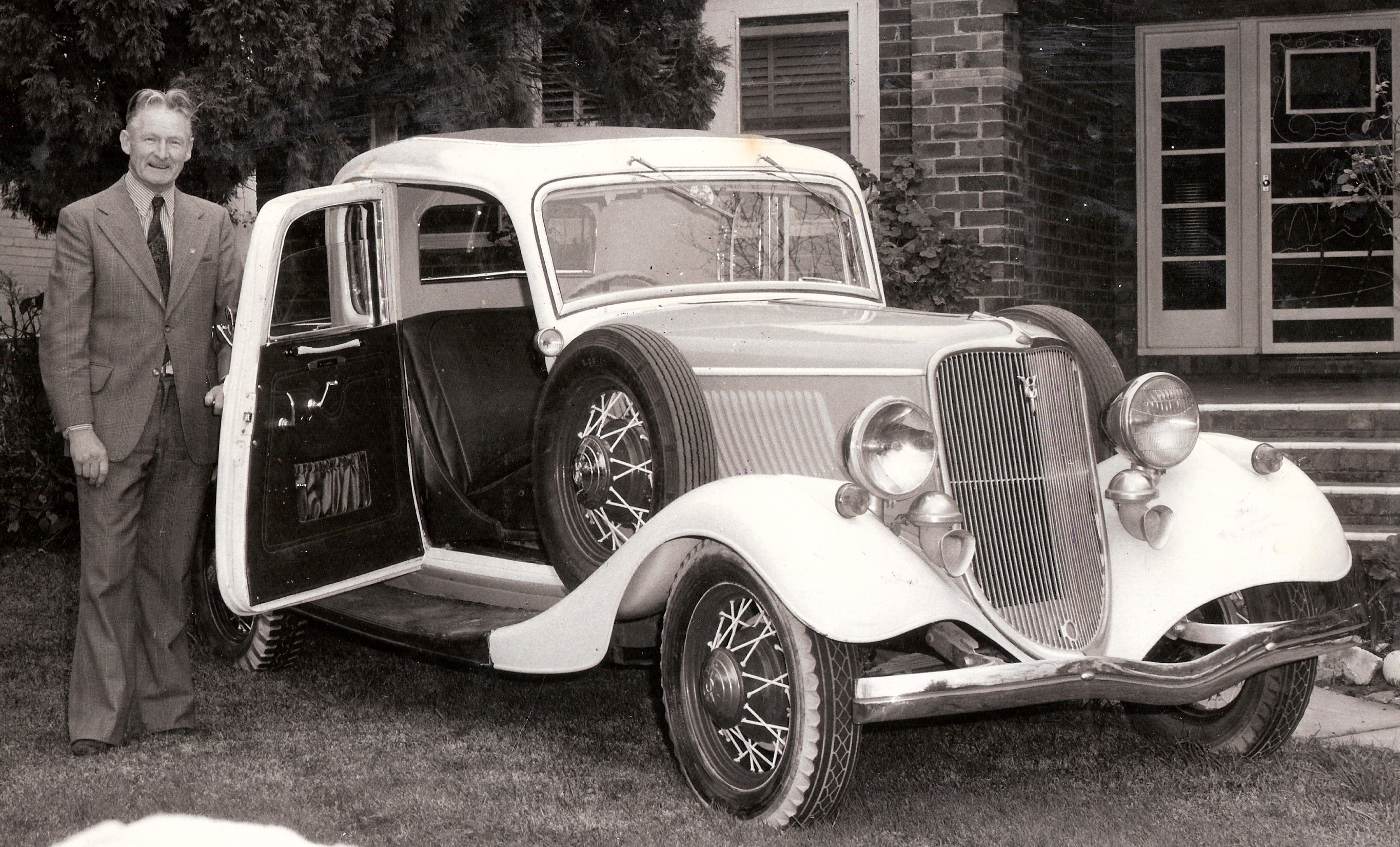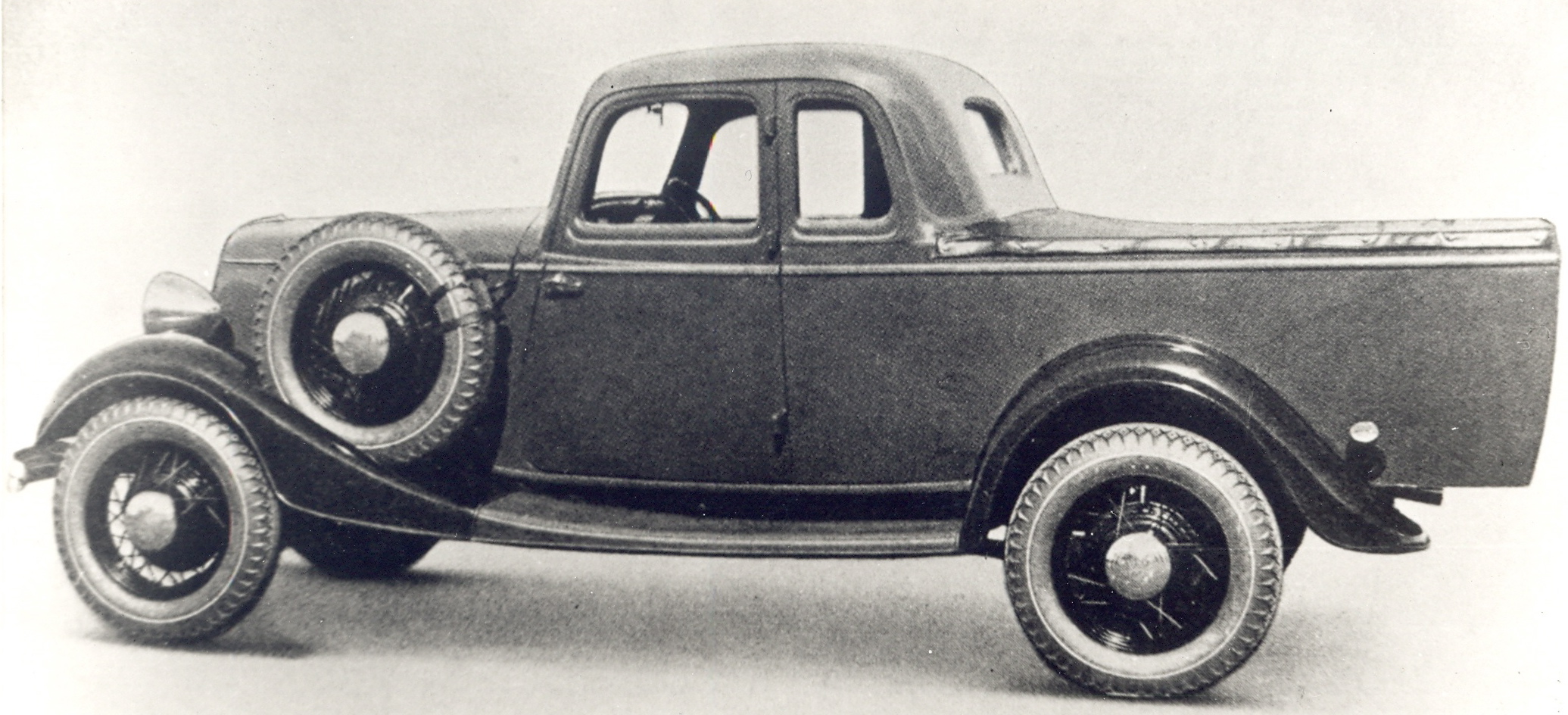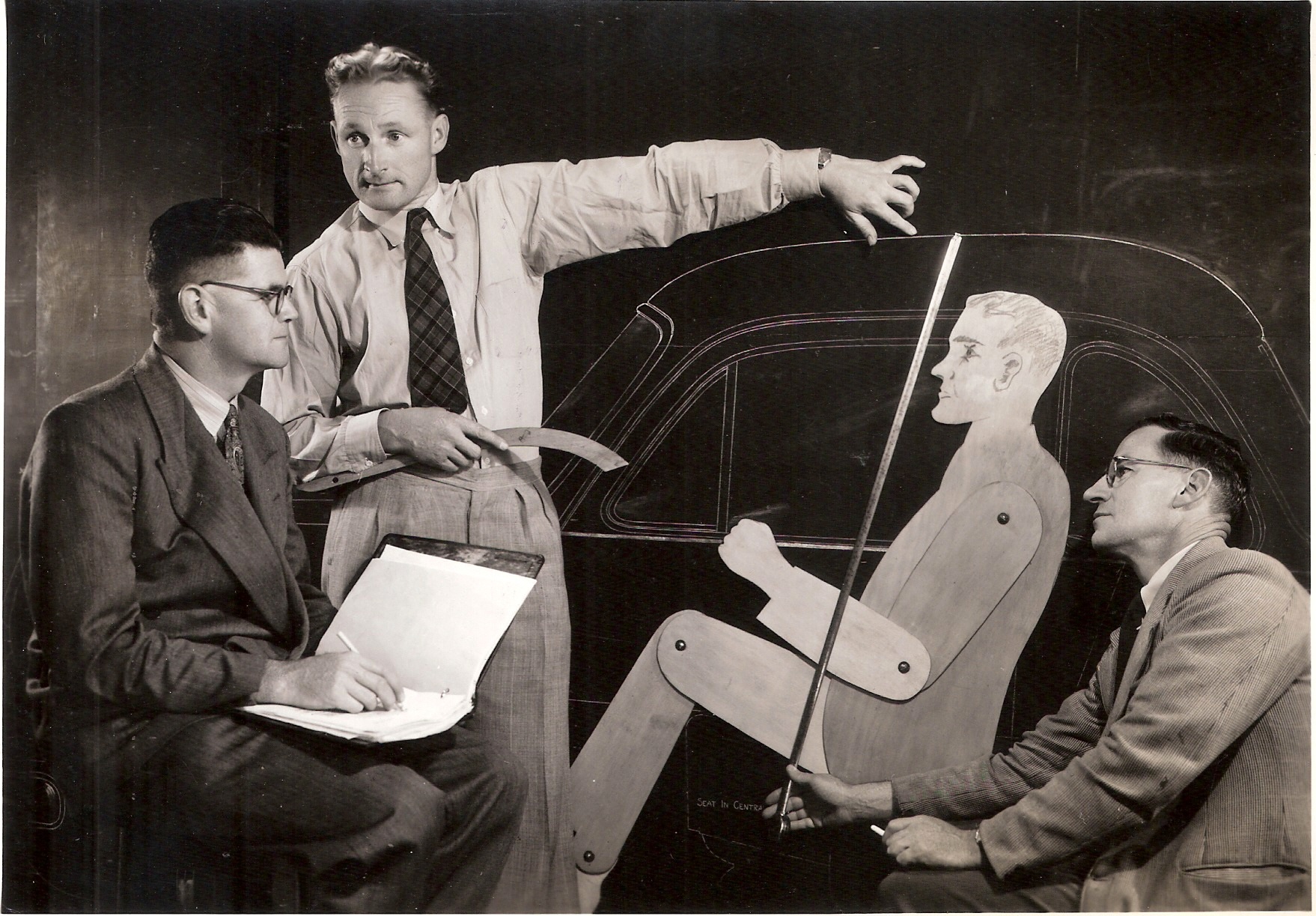In 1932, a letter was delivered Hubert French, managing director of Ford’s Australian assembly plant at Geelong, a city on Port Phillip Bay west of Melbourne. The letter was from a local farmer’s wife, who said she wasn’t comfortable riding in her husband’s truck. She wanted to know why someone couldn’t build a vehicle that would carry people to church on Sunday and pigs to market the rest of the week.
French passed the letter along to his sales manager, who showed it to the plant manager, who assigned the plant’s one-man design department, 23-year-old Lewis Thornet Brandt, to draw up with a response.
What Brandt drew up were sketches of a vehicle that was a standard coupe in front but with an integrated pickup truck-style bed in the back. By blending the sides of the pickup bed with the coupe bodywork, the result not only was aesthetically pleasing, but provided more room for cargo — or pigs — that might have been expected.
Working on a blackboard more than 30 feet long, Brandt drew a full-scale version of his coupe-utility vehicle. Soon, two prototypes were produced for testing. The car/truck went into production in January 1934, making 2014 the 80th anniversary of what Australians call the “ute.”
Late in his life, Brandt recalled that plant superintendent Slim Westman “quite rightly reckoned that if we cut down a car and put a tray on the back, the whole thing would tear in half once there was weight in the back.”
“Them pigs are going to have a luxury ride”
So Brandt added structure, reinforced the area between the B-pillars and truck bed, and came up with a vehicle that featured both an all-weather cabin and a 5-foot, 5-inch bed with a 1,200-pound payload capacity.
“Boss,” Brandt told Westman, “them pigs are going to have a luxury ride!”

Brandt’s coupe-utility was equipped with a V8 engine, three-speed manual transmission and transverse leaf-spring suspension with shock absorbers in front and heavy-duty semi-elliptic rear springs and shocks in the rear.
The passenger compartment was the same as in the four-door Model 40 Ford five-window coupe, at least from the front seats forward. The truck bed was wood-framed with steel outer panels.
During World War II, General Motors’ Australian division, Holden, began building its own utes, though they were badged as Chevrolets.

Chevrolet had introduced a not-as-practical ute-style vehicle to the United States in 1936 in the form of its Model FC Coupe-Delivery, a standard Chevrolet two-door coupe that instead of a trunk lid had a pickup bed that fit into the trunk opening and extended out to the rear bumper.
Ford launched its American version in 1937 as the Model 78 Model 770 Cargo-Express, though it was a one-year wonder. In 1938, Plymouth produced its Model P5 Business Coupe-Pickup and in 1939, it offered the PT81 business coupe with a pickup-style cargo box that extended out beneath and beyond the trunk lid.
In the 1930s, American Austin and American Bantam did pickup versions of small cars, as did Crosley in the 1940s. Later, Studebaker, Dodge, Plymouth and more recently Subaru all would offer pickups-style beds in the back of passenger car platforms.
In 1957, Ford brought the “ute” concept to the United States, turning its Ranch Wagon station wagon into the Ranchero sedan-pickup. The Ranchero would remain in production until 1979, though it was never as popular as its rival from Chevrolet.

For the 1955 model year, Chevrolet introduced the Cameo Carrier, a pickup truck based on the company’s Handyman station wagon. The Cameo Carrier was a limited-production vehicle and remained in production only through 1958.
However, the Cameo changed the styling of pickup trucks. Instead of blisters around the rear wheel wells, the Cameo was “slab-sided,” using fiberglass panels – and later steel sheetmetal – to smooth the truck’s exterior over the wheel wells.
Then, in 1959, Chevrolet launched a new car-based pickup, the El Camino, which Chevrolet claimed was “More than a car… More than a truck.” Actually, it was less than either, seating only three people and carrying only 1,150 pounds of cargo. But that really didn’t matter because it was oh-so-cool.
Except for a four-year hiatus in the early 1960s, El Camino remained in production until early in 1988 (GMC dealers sold a version known as either the Sprint or Caballero).
Meanwhile, Australia had become something of a “Uteopia,” which is what the Aussies call the annual Play on the Plains Festival & World Record Ute Muster, held annually at Deni, which is short for Deniliquin, a rural and inland town where utes are celebrated with more than 6,000 vehicles and nearly 20,000 people coming to the party.
Only 22 years old when he started working at Ford, Brandt would have a long and productive career with a resume that included not only the first ute but the long-range fuel tanks for Spitfire and Thunderbolt fighter planes and a variety of vehicles, including the heralded 1967 Australian Ford Fairlane.
Brandt personally restored a 1934 coupe-utility, which his family loaned to Ford for the anniversary photo shoot. In 1987, he died when he was involved in a crash while driving another restored version of one of the original utes.





Such a shame Ford Geelong announced it’s closing up the factory with massive lay-offs.
Geelong will be very hard hit & i feel so sorry for this great city.